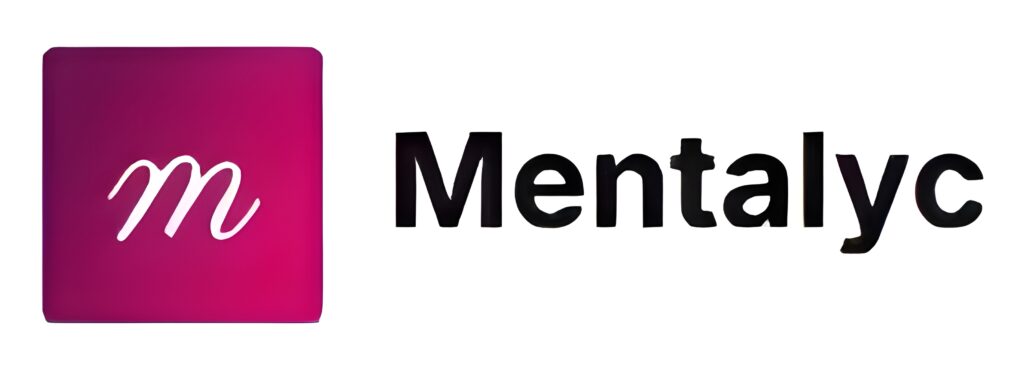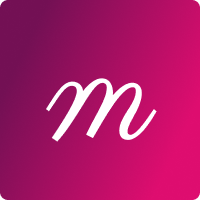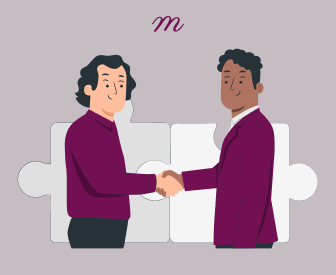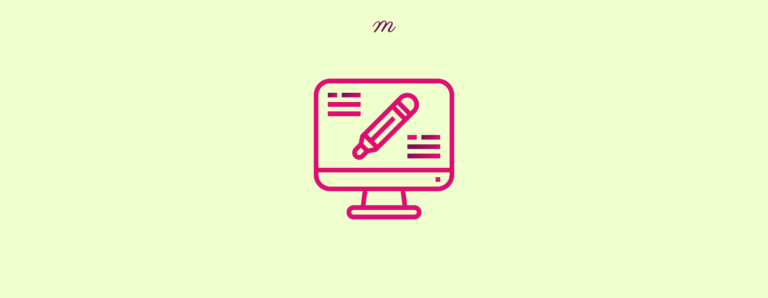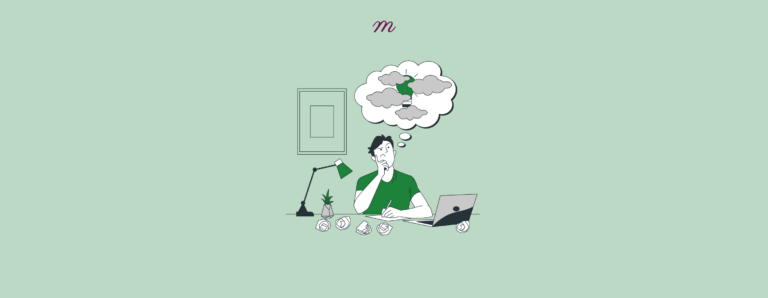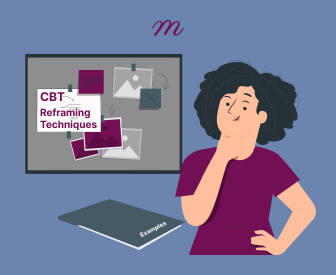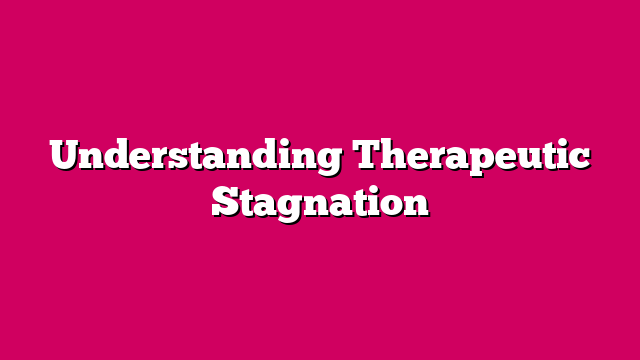Have your progress notes written for you automatically
Are you ready to shake things up and transform the mental health field? Imagine a world where mental health practitioners collaborate seamlessly to provide tailored, comprehensive care for each client. With collaborative documentation, this vision is within reach. By pooling your expertise with other professionals, you can unlock invaluable insights and develop innovative treatment plans that genuinely change lives. While the road to collaborative documentation may be challenging, the rewards for you, your practice, and your clients are immeasurable. From ethical guidelines to practical strategies for implementation, we have everything you need to start building a supportive and collaborative network in mental health. Join us on this game-changing journey towards better mental health for all!
What is Collaborative Documentation, and What Role Does it Play in Mental Health Counseling?
Collaborative documentation in mental health counseling is where multiple practitioners work together to provide treatment and maintain client care records. The records kept include the client’s diagnosis, treatment history, current symptoms and functioning, medications, therapy sessions, and the client’s responses and progress. This approach ensures consistency in the therapists’ approach to treatment as they create treatment plans, set therapy goals, manage medication, and update progress notes. When working with clients, notes can be created collaboratively in real-time during joint sessions or asynchronously after separate sessions.
The notes must indicate who provided the information and when it was provided and are reviewed and approved by all contributors. These notes should cover the client’s current symptoms and functioning, progress toward treatment goals, changes to diagnoses or medications, and plans for future treatment. In addition, the notes may include recommendations for referrals, community resources, or coordinating care with other providers. Ultimately, all insights are combined into one progress note for easy reference.
Why Does Collaborative Documentation Matter?
Collaborative documentation is important in ensuring a comprehensive approach to mental health care. When therapists work together, they can provide a longitudinal view of clients that can inform and guide ongoing treatment. Mental health conditions are often complex and require input from various disciplines and professionals. By collaborating and sharing information, therapists and other healthcare providers can consider all aspects of a patient’s well-being, leading to more personalized and comprehensive treatment plans. Collaborative documentation also helps reduce the risk of fragmented care, which can occur when practitioners work independently and fail to share important details, leading to gaps in treatment.
Collaborative Documentation Examples
Collaborative documentation is a valuable tool used in different situations to improve communication and coordination. To better understand how it works, let’s look at some examples.
To illustrate, let’s consider a scenario where a client receives treatment from a therapist and a psychiatrist. In such a case, the therapist and psychiatrist work together after a client session to create a single progress note. This note is a platform for them to discuss the client’s progress, challenges, and future steps. Additionally, they may incorporate the client’s treatment plan, overall progress, and other pertinent details to ensure comprehensive documentation.
Here are some more examples of collaborative documentation in action:
- A client’s primary therapist and case manager work together to develop a comprehensive treatment plan. By sharing their unique observations and recommendations, they create a well-rounded plan that considers all aspects of the client’s needs.
- The therapist, psychiatrist, and social worker of a client work together to create a comprehensive and precise discharge summary. By combining their expertise on the client’s medical history, responses to treatment, and discharge requirements, they generate a thorough and accurate summary that can aid in developing future treatment plans and guarantee the client’s optimal care.
The Benefits and Limitations of Collaborative Documentation
Collaborative documentation is extremely helpful in mental health care. However, it is crucial to be aware of potential limitations that, if not handled properly, can result in conflicts and misunderstandings. By implementing guidelines carefully and ensuring that the client has informed consent, therapists can effectively reduce potential risks and maximize the advantages of collaborative documentation.
Consider the additional benefits and limitations below:
The Benefits of Collaborative Documentation
- Reduces repetition for the client since they don’t have to re-tell their story to each new provider.
- Increased accountability. Professionals feel more responsible when they know their notes and recommendations will be seen by colleagues.
- Collaborative documentation improves mental health care practice, increases efficiency, reduces errors, and promotes adherence to confidentiality, consent, and privacy guidelines.
- Holistic support. Collaborating on notes leads to a more well-rounded support system for the client. Allowing for better understanding and treatment of co-occurring conditions.
The Limitations of Collaborative Documentation
- Confidentiality concerns. More people with access to records means an increased risk of privacy breaches. Strict policies must be in place to prevent unauthorized access.
- Billing issues. Collaborative documentation may not always meet the requirements for insurance reimbursement. Providers need to determine if and how they can bill for collaboration time.
- Personality clashes. Treatment team members may occasionally disagree or experience interpersonal conflicts that make working together challenging.
- Requires coordination and time management between busy schedules.
What is the Recommended Way to Collaborate with Someone on a Document?
The recommended way to collaborate on a document is as follows:
Establish Guidelines
Before you start working on a document with your collaborator(s), it is essential to meet and discuss the scope and purpose of the document. You should also agree on a style guide, set a schedule for drafting and reviewing, and decide how you will give and receive feedback to make the process constructive, which will help ensure that you both stay on the same page and work efficiently towards a common goal.
Outline Sections
Create an outline with clear sections and assign responsibilities for drafting each part, allowing for revisions. This ensures coherence and flow.
Draft Individually
Each person drafts their assigned sections. Review the work of the other collaborators and provide comments to build on one another’s ideas. Discuss any significant changes before revising.
Revise Together
Schedule a meeting to review the document together; as a team, work to remove any gaps or redundancies and identify any inconsistencies that need to be addressed. Read the whole document out loud as a group to spot any lingering issues.
Review and Approve
If required, submit the final draft for review and approval. Make any requested revisions promptly and professionally.
How to Ensure Ethical Collaborative Documentation Practices
Mental health professionals must follow guidelines to promote ethical and collaborative documentation practices. These guidelines encourage transparency, accountability, and optimal coordination to ensure high-quality and ethical care for clients.
Confidentiality
Maintain client confidentiality at all times. Only share information with other professionals directly involved in the client’s care. Obtain proper consent before exchanging details about treatment or the client’s condition.
Accuracy
Record information truthfully and objectively. Do not speculate or make assumptions. Indicate which details are observations versus opinions or interpretations. Get input from all professionals to provide a complete and precise account of the client’s status and care.
Objectivity
Remain unbiased and nonjudgmental. Focus on facts over opinions. Use a professional, empathetic tone and word choice. Avoid stigmatizing or disrespectful language.
Consistency
Ensure consistent format, content, and frequency standards among all treatment team members to ensure critical information is included.
Timeliness
Update collaborative documentation promptly. Share new details as soon as possible to inform all professionals about the client’s condition and any changes or events that could impact care. Delayed reporting could negatively impact treatment.
Review and Sign-off
Have all members of the collaborative treatment team review and approve the final documentation. This helps verify that the information is complete, accurate, and meets ethical standards before being submitted to the client’s medical record. Don’t be afraid to get a colleague’s opinion if you need clarification.
Collaborative Documentation Standards and Requirements for Mental Health Practitioners
Collaborative documentation is a valuable tool in mental health practice, enabling healthcare professionals to work together to provide comprehensive care to their clients. However, it is critical to adhere to specific standards to ensure its effectiveness. Collaborative documentation requires each contributor to have the appropriate license and credentials, and all entries must be recorded objectively and accurately. The records should include the date of service, the providers present, the interventions used, and the outcomes achieved.
Mental health practitioners must know state laws and jurisdiction-based insurance policies that apply to collaborative documentation. By adhering to these guidelines, practitioners can ensure that their collaborative documentation is comprehensive, accurate, and legally compliant. It is also important for practitioners to attribute interventions, recommendations, and follow-ups to the appropriate provider. Clear guidelines and standards are crucial in helping practitioners overcome these challenges and work more effectively together. Practitioners need to determine the responsibilities of each team member regarding the documentation and billing aspects of collaborative sessions. We highly recommend that all practitioners involved in a case come to a mutual understanding to ensure legal compliance. This will help all team members work collaboratively and efficiently at their best.
The Challenge of Incorporating Collaborative Documentation into Your Billing Process
Collaborative documentation itself is not usually considered a billable service. To make it billable, the time spent on collaborative documentation must be linked to the direct care of a client. For instance, the time spent would be billable if two therapists collaborate to discuss a shared client’s progress and treatment plan. However, if the therapists meet to review documentation, the time spent would not be billable. While some insurance companies may allow billing for care coordination, collaborative documentation is often not billable. Our best practice tip is to ensure that you stay updated on each insurance company’s legal policies.
Concurrent Documentation vs Collaborative Documentation: What’s the Difference?
Clinicians can choose from two methods when documenting sessions with interdisciplinary teams. Collaborative documentation involves all participants in the session, creating a cohesive set of shared notes. Alternatively, concurrent documentation consists of each participant taking individual notes and impressions during the session and sharing them with the rest of the team before submission. Both methods offer distinct advantages and allow each clinician to capture their unique perspective on the session and their observations, which can help provide a more comprehensive understanding of the patient’s case.
How Concurrent Documentation Works
Concurrent documentation is a note-taking approach that involves multiple individuals documenting in real time during a session or meeting. This method ensures that everyone captures the crucial information discussed and agreed upon, eliminating the need to rely on individual memory and interpretation. However, this approach requires coordination and collaboration among the participants, who must work together to document the session effectively. They should be prepared to discuss and agree on what information to include in the documentation. Participants can use a shared document or digital platform to add their notes, comments, and relevant information in real-time, ensuring everyone has access to the same data and stays on the same page throughout the session.
The Benefits and Drawbacks of Concurrent Documentation
Concurrent documentation offers a significant advantage as each healthcare provider can document their part of the client’s treatment separately, resulting in more specialized and personalized notes. For instance, individual notes can be created for physical therapy, occupational therapy, speech therapy, psychology, and psychiatry. These notes detail the specific interventions provided during the session, the client’s progress, and any changes required in the treatment plan. This approach gives the client’s care team a comprehensive picture from different angles while minimizing redundancy between notes. All these specialized notes collectively paint a holistic view of the client’s needs, strengths, and areas for growth, optimizing the treatment plan.
Concurrent documentation can be challenging, especially with no established guidelines for documentation responsibilities. It can be even more daunting when scheduling review sessions with multiple providers. Coordinating meetings among clinicians for collaborative documentation can be difficult due to varying schedules, patient loads, and clinic responsibilities. However, you can address this issue by providing all practitioners access to patient information through online collaboration tools. This can reduce inefficiency and ensure that all providers have access to the same up-to-date patient information. Additionally, a systematic approach to documenting can reduce the likelihood of duplicate histories, repetitive assessments, and tests when patients first see each clinician.
An additional drawback is that, in some cases, providers may sometimes choose not to share all the information with their colleagues due to concerns about confidentiality and fear of exposing their clinical decision-making or recommendations. To overcome this issue, establish clear documentation guidelines that ensure all relevant information is shared while protecting patient confidentiality. Furthermore, educating providers on the benefits of transparency and collaboration while safeguarding proprietary information can promote better provider cooperation.
Tips for Concurrent Documentation in Mental Health Settings
Here are some tips to keep in mind when using concurrent documentation in mental health settings:
Focus on the Client
Remember that the purpose of documentation is to provide the best care for the client. Focus on being thorough yet concise, including only information relevant to treatment.
Maintain Confidentiality
Uphold strict confidentiality and privacy standards. Only share information with those directly involved in the client’s care. Ensure all digital files are securely stored and encrypted.
Use a Standardized Format
Follow your organization’s documentation procedures and use a standardized format for consistency. This could include templates, required fields, and a standard style guide. Keep entries organized and easy to navigate.
Provide Context
Give the reader enough context to understand the current status and history. Reference previous entries and the overall treatment plan. Explain changes or events that could impact care.
What are the Best Documentation Tools?
Some of the best tools for collaborative documentation include:
Google Docs & Sheets
Google Docs and Google Sheets are free, cloud-based tools that allow multiple users to collaborate on documents and spreadsheets in real time. Google Docs has a comments and discussion section that helps provide context and clarity, while Google Sheets features a comments section, version history, and cell change tracking. Both tools allow you to see who is viewing and editing the document and ensure that all collaborators can always access the latest version.
Microsoft Word Online
The online version of Microsoft Word also provides real-time co-authoring, change tracking, and commenting features for collaborative documentation. It offers version history to see older versions and roll back if needed. As an online, subscription-based service, the latest document is accessible to all collaborators.
Dropbox
While not a dedicated documentation tool, Dropbox can be useful for collaboration. People can access and edit by saving documents in a shared Dropbox folder. Dropbox will keep versions of the file so you can see edits and go back to previous versions if needed. The downside is that simultaneous editing and change-tracking features need to be improved.
Huddle
Targeted at businesses, Huddle provides a project management platform with built-in collaborative documentation features like version control, task management, and approval workflows. Documents can be accessed on mobile and desktop, with changes synced in real time. Huddle may have a steeper learning curve but can be a good option for larger practices.
So…Which One is Better?
The approach you choose comes down to your personal preferences, logistical factors, and what will result in the best care for your clients. Both concurrent and collaborative documentation have a place, so find what works for your practice. Most importantly, always ensure you and your colleagues are on the same page, even if you don’t always see eye to eye!
Conclusion
Collaborative documentation can be a powerful tool for effectively and ethically treating clients with mental health issues. Even though it requires extra time and coordination, the benefits to your clients and practice are well worth the effort. If you need help figuring out where to start, you can begin by collaborating with one or two trusted colleagues. This can help you build a strong network and streamline your documentation process. To further amplify your collaborative documentation, consider signing up for Mentalyc. With Mentalyc, you and your team can quickly create and share notes, organize them into folders for easy searching, and grant access to select team members for specific documents or folders. Simplifying the process and improving communication among all clinicians involved can significantly enhance the quality of care.
Sign up now for a free trial of Mentalyc and begin your journey towards improving care, effectiveness, and work-life balance.
FAQ on Collaborative Documentation
As a mental health professional, you likely have questions about collaborative documentation. Here are some common ones:
What exactly is collaborative documentation?
It’s when multiple providers jointly create and sign a single clinical note about a client. This allows for a more holistic view of the client and their treatment.
Is collaborative documentation billable?
Collaborative sessions and resulting documentation are billable; each provider pays for their time spent. However, check state and jurisdiction policies for insurance and billing to ensure best practices.
What are the benefits of collaborative documentation?
It improves care coordination, provides a shared understanding of the client, and reduces repetition. It also allows for peer consultation and enhanced treatment recommendations.
Are there any limits to collaborative documentation?
Yes, there are ethical and legal limits around client privacy and consent. Client privacy and consent require properly releasing information forms before providers can collaborate.
What standards guide collaborative documentation?
Relevant laws, ethics codes, and best practices for each provider type must be followed—for example, HIPAA privacy rules, state licensing laws, and professional association ethics standards.
How does collaborative documentation differ from concurrent documentation?
Collaborative notes provide an integrated view of the client and their treatment, while concurrent notes are separate notes written by each provider.
Resources:
- Yoo, N., Matthews, E., Baslock, D., & Stanhope, V. (2023, August 2). Impact of collaborative documentation on completeness and length of clinical notes in Behavioral Health Settings. Psychiatric Services. https://ps.psychiatryonline.org/doi/abs/10.1176/appi.ps.20230118
- Collaborative Documentation Implementation Quick-Start Guide. Los Angeles County Department of Mental Health. (n.d.). https://file.lacounty.gov/SDSInter/dmh/1114221_QuickStart-CollaborativeDocumentationImplementation.pdf
